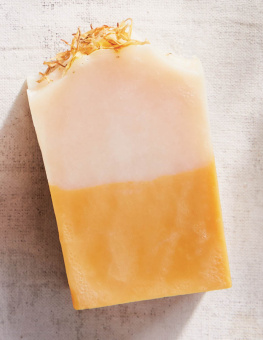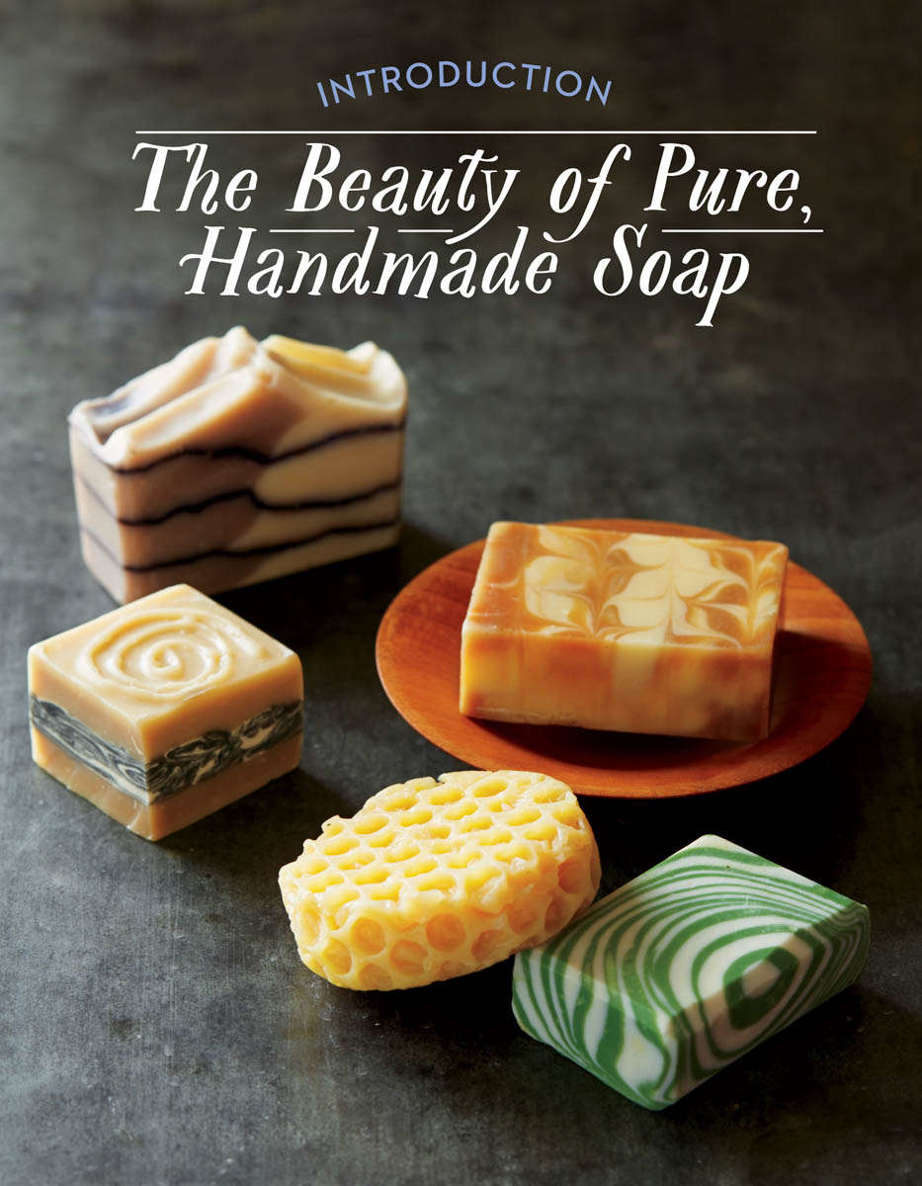Dedication & Acknowledgments
This book is dedicated to my husband, Chris Renoud. Being married to an entrepreneur is filled with highs and lows, and during the process of writing this book, he took on extra duty at home with our two children and busy household so I could write, soap, edit, and soap some more. My mom and dad have always been there to lend a helping hand throughout my entire entrepreneurial journey and this part of it was no exception. Thank you for letting me bounce ideas off of you and always supporting me.
My team at Bramble Berry is one of the great joys of my life. They do the hard stuff so that I can be creative and focus on all things handmade. I could not do this job without them nor would I want to. A big shout-out to my assistant Caitlin who kept all the recipes, ingredients, colorants, and techniques organized during this writing and testing process.
Finally, thank you to the dedicated group of brand new soapers who tested each recipe in this book to ensure that they would produce amazing bars of soap each and every time.
Contents
introduction
The Beauty of Pure, Handmade Soap
If youve picked up this book, theres a good possibility that youre consciously choosing to reduce synthetic ingredients in your life. Handmade soap lathers and cleanses just as well as commercial soap but doesnt have harsh ingredients, and you can mix and match the ingredients to come up with a soap that is just right for you.
For example, coconut oil is a great cleanser and produces good lather, but used at 100 percent, it can feel drying to some skin. To balance it out, you can combine it with a myriad of other oils that are gentler. Olive oil, for example, is commonly used because skin loves it and it creates a stable, conditioning bar. Avocado oil, sweet almond oil, and rice bran oil contain vitamins and skin-loving fatty acids, and theyre cost effective. Castor oil adds extra bubbles. Shea butter and cocoa butter have wonderful moisturizing properties.
With homemade soaps, you control the additives. Ingredients such as coffee grounds and crushed walnut shells add gentle exfoliating power. Oatmeal can provide soothing relief for itchiness. Infused oils provide extra moisturizing and calming properties for difficult skin. Having a pharmacopoeia of custom-made natural soap ingredients means you can create the best product for your skin, using different formulas as needed. This book contains over 30 fully tested recipes for almost every skin type and occasion.
Another reason to make your own soap is that its an environmentally sound practice. In the past few years, an entire population of soapmakers has picked up the hobby and even entered the business of soapmaking because they were concerned about a variety of issues, including the use of phosphates, which are linked to algae bloom in rivers and streams. Many people also wanted to use ingredients that had not been tested on animals and did not threaten natural resources.
Even using all-natural ingredients can have an environmental impact to consider. For instance, more than half of the recipes in this book are made without palm oil for those who are concerned about the link between palm oil production and the declining ecosystem of orangutans. Orangutans have become the poster child for this issue because nearly 90 percent of their habitat has been destroyed by unsustainable logging in Sumatra and Borneo, placing them on the Endangered Species list. This mass deforestation also affects the habitats of Sumatran tigers, sun bears, clouded leopards, and proboscis monkeys.
Making soap with or without palm oil is a personal choice; while it is possible to soap without palm oil, there is often a trade-off for bar hardness and lather. One option is to purchase certified sustainable palm oil to use in your soapmaking (see ). Knowing the source of your ingredients allows you to make products exactly the way you want them, and make them in good conscience.
Another consideration is the use of genetically modified organisms (GMO) in producing some oils commonly used in cosmetics. There are many non-GMO options for oils and ingredients. You can find many of them at your local health food store or online. Two oils that are commonly GMO are soybean oil and canola oil. If this is a concern for you, look for the Non-GMO Project Verified seal, or a suitable counterpart. Additionally, you can check with your vendor if their products are non-GMO.
Avoiding controversial ingredients is possible if you take time to research your ingredients and ask questions of your vendors. You can make soaps that are good for you and the environment.
But most of all, making beautiful soap is just plain fun! Creating something useful and beautiful out of ordinary ingredients brings a thrill like no other. Being able to say, I made it is inspiring and delightful. Making your own soap gives you a way to express yourself that is different from painting or sculpting. Soaping offers unlimited opportunities to be creative with colorful designs and beautiful patterns that appeal to any taste. You can make simple, serviceable bars that are lovely in their purity or opt for more complex patterns that create layers or swirls of color. Or go all out with embedded designs that pop from a pretty background. (See .)
Even better, soap is a consumable art form: the more you make, the more you can use, give away, or sell. And once its used up, you can make more. It is a never-ending creative cycle.
Note: The best way to read this book is to review the science parts of the book before diving into soapmaking. If youre just starting out, be sure to read are good recipes for beginners to practice with before tackling more intricate designs and techniques.
Happy Soaping!
P.S. If youd like to continue your soapmaking journey, be sure to check out my first book, Soap Crafting , or my blog, SoapQueen.com .
Chapter 1
The Soapmaking Process
Knowing how soap is made and the science behind it will help you be alert to pitfalls, troubleshoot problems, develop your own recipes, and keep yourself safe during the process. This book primarily focuses on cold-process soapmaking. The term cold-process refers to the fact that you dont need to use an outside heat source, such as a stove, during the mixing stage of making soap, although heat is produced during the process. This is because lye mixed with water undergoes an exothermic reaction that can produce temperatures up to 200F (93C).
The Science of Soapmaking
The formula for making soap can be written like this:
















